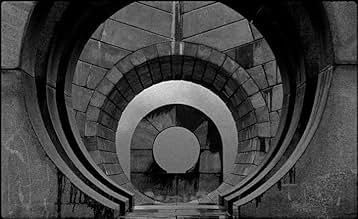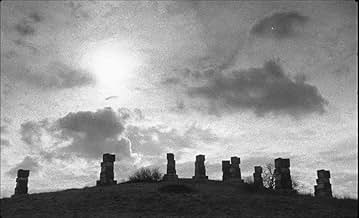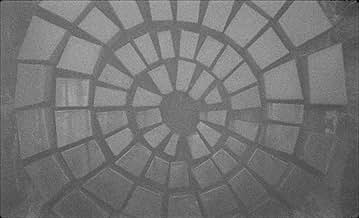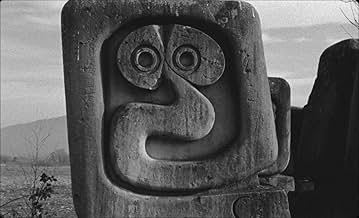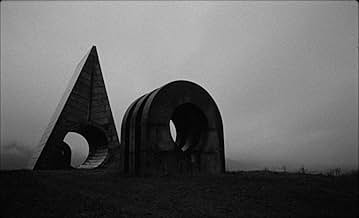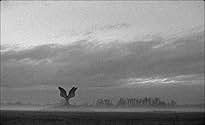Last and First Men
- 2020
- 1h 10min
NOTE IMDb
6,7/10
4,9 k
MA NOTE
Ajouter une intrigue dans votre langueTwo billion years ahead of us, a future race of humans finds itself on the verge of extinction. Almost all that is left in the world are lone and surreal monuments, beaming their message int... Tout lireTwo billion years ahead of us, a future race of humans finds itself on the verge of extinction. Almost all that is left in the world are lone and surreal monuments, beaming their message into the wilderness.Two billion years ahead of us, a future race of humans finds itself on the verge of extinction. Almost all that is left in the world are lone and surreal monuments, beaming their message into the wilderness.
- Réalisation
- Scénario
- Casting principal
- Récompenses
- 2 victoires et 5 nominations au total
Tilda Swinton
- Narrator
- (voix)
Avis à la une
With the summer movie season of 2020 being drier than sandpaper (thanks to our good friend COVID), the season of banking on streamed releases has been all the more exciting. Through September, we've already enjoyed I'm Thinking of Ending Things, the documentary Feels Good Man, the return of Amazon's The Boys, and that one French Netflix film about dancing or whatever. I understand there's also more Borat coming up.
But the one that truly caught me off guard was Last and First Men - an Icelandic film that was actually completed over three years ago, stars no people bar narrator Tilda Swinton, and was directed by Jóhann Jóhannsson, the late composer who scored 2018's Mandy as his final effort (which I still say deserved a farewell-Oscar).
Last and First Men plays like a documentary from the distant future, yet is so minimalistic in its unearthly footage that it feels more like a visual audiobook, narrated by Swinton with the same gravitas that Cate Blanchett gave Malick's Voyage of Time - albeit darker and more aware of the Earth's mortality. It is fair to say that "nothing happens" in the movie, and if your measurement of quality reduces itself to "number of things happening", close this window so I can proceed in peace.
What we see is a monochromatic series of alien structures, set to narrations that explain how humanity evolved after the "First Men"; that is, you and I. The message being broadcast to us is from the almost superpowered Last Men. The sun is dying, killing itself without care for the superhumans we've become: a collective communicating mainly with the mind and engaging in sex or intimacy only when a new step on the evolutionary ladder may be possible - we learn that pregnancies last 20 years and infancies a century.
Without giving too much away, we also learn that, in a sense, accepting the inevitability of doom - a reality that persists even if we, the insignificant Sol 3 bipeds, successfully achieve immortality and higher awareness - made us "truly" human and connected again. This is all very intriguing, and I want to say that the ambiance of Jóhannsson's imagery and sound made it hypnotizing to take in. Alas, I do think the film itself winds up repetitive, at least visually.
Perhaps I shouldn't quite think of it as a film. It has been repeatedly referred to as a "multimedia project" that may be best enjoyed as an art installation with a live orchestra (the film does have an absolutely superb musical score). This might remind some cinephiles of Matthew Barney's Cremaster Cycle, which is one of the few properties I can safely call "pretentious" without feeling as if I'm using the word as a get-out-of-thinking free card.
Last and First Men is hardly so pointless; it has something to communicate and the images of empty desolation are ultimately fitting, given that this is meant to be a message sent to our astronomers from a close-to-apocalyptic future. It's all part of the point (I also understand keeping things minimal with something as unfilmable as the sheer smallness of human existence next to the lifespan of the cosmos, which may as well be left to our already limited imagination). The problem is that some of these structures and locations, while impressive on an SFX level, start to look a bit samey.
Even so, I will have this piece on my mind for a while. It is a journey to the future of man that you won't soon forget. The question is if you'll want to go again.
But the one that truly caught me off guard was Last and First Men - an Icelandic film that was actually completed over three years ago, stars no people bar narrator Tilda Swinton, and was directed by Jóhann Jóhannsson, the late composer who scored 2018's Mandy as his final effort (which I still say deserved a farewell-Oscar).
Last and First Men plays like a documentary from the distant future, yet is so minimalistic in its unearthly footage that it feels more like a visual audiobook, narrated by Swinton with the same gravitas that Cate Blanchett gave Malick's Voyage of Time - albeit darker and more aware of the Earth's mortality. It is fair to say that "nothing happens" in the movie, and if your measurement of quality reduces itself to "number of things happening", close this window so I can proceed in peace.
What we see is a monochromatic series of alien structures, set to narrations that explain how humanity evolved after the "First Men"; that is, you and I. The message being broadcast to us is from the almost superpowered Last Men. The sun is dying, killing itself without care for the superhumans we've become: a collective communicating mainly with the mind and engaging in sex or intimacy only when a new step on the evolutionary ladder may be possible - we learn that pregnancies last 20 years and infancies a century.
Without giving too much away, we also learn that, in a sense, accepting the inevitability of doom - a reality that persists even if we, the insignificant Sol 3 bipeds, successfully achieve immortality and higher awareness - made us "truly" human and connected again. This is all very intriguing, and I want to say that the ambiance of Jóhannsson's imagery and sound made it hypnotizing to take in. Alas, I do think the film itself winds up repetitive, at least visually.
Perhaps I shouldn't quite think of it as a film. It has been repeatedly referred to as a "multimedia project" that may be best enjoyed as an art installation with a live orchestra (the film does have an absolutely superb musical score). This might remind some cinephiles of Matthew Barney's Cremaster Cycle, which is one of the few properties I can safely call "pretentious" without feeling as if I'm using the word as a get-out-of-thinking free card.
Last and First Men is hardly so pointless; it has something to communicate and the images of empty desolation are ultimately fitting, given that this is meant to be a message sent to our astronomers from a close-to-apocalyptic future. It's all part of the point (I also understand keeping things minimal with something as unfilmable as the sheer smallness of human existence next to the lifespan of the cosmos, which may as well be left to our already limited imagination). The problem is that some of these structures and locations, while impressive on an SFX level, start to look a bit samey.
Even so, I will have this piece on my mind for a while. It is a journey to the future of man that you won't soon forget. The question is if you'll want to go again.
I wouldn't really regard nor describe this as a film, but a great art installation piece. The music is fantastic & contemplative & complements the visuals completely & it does project you into another worldly experience along with the narration of Tulsa Swinton. Unsurprisingly it is mainly a vehicle for the composition of sounds & is surprisingly hypnotic. Best experienced BIG, DARK & LOUD.
Another reviewer said it. This is is not a movie which is much of the reason for the dislike. There are no moving images. There is simply panning over still figures while the narrator speaks, telling a classic SF story written in 1939. It's old sf and it has no traditional story either. The story itself is not to everyone's taste so neither is this "visual audio book". The story is not boring to most SF fans, but as a MOVIE, sure it is. Because nothing moves. There are no actors. It's not really a movie at all in the normal sense. It's one of the most unfilmable stories ever written.
The most interesting movie I've seen in a long while. Visually and Sonically stunning.
I can't fault the people who like this one OR the people who don't. The writing is wonderful, and Tilda Swinton's narration is sonorous, but the visuals really add nothing, and the pacing is painfully slow.
Visually, we do get the sense of a dead planet. We get it hammered into us shot by excruciating shot for the entire duration of the film. It's rather fatiguing.
I don't want to argue with the people who like it. If you're so taken with the story that it kept you involved, then great. The film makers could have done a lot more with it. The visuals could have told much more of a story, even with keeping the same approach. Unfortunately, for me the experience was that of a half-hour audiobook crammed into an hours worth of a film.
Visually, we do get the sense of a dead planet. We get it hammered into us shot by excruciating shot for the entire duration of the film. It's rather fatiguing.
I don't want to argue with the people who like it. If you're so taken with the story that it kept you involved, then great. The film makers could have done a lot more with it. The visuals could have told much more of a story, even with keeping the same approach. Unfortunately, for me the experience was that of a half-hour audiobook crammed into an hours worth of a film.
Le saviez-vous
- AnecdotesThe structures shown throughout the film are called Spomeniks. They are former Yugoslavian World War II monuments and memorials built starting in 1945 and continuing throughout the 1970s. Their architectural style is called Brutalist, which uses minimalist construction and emphasizes the raw building materials and structural elements over more decorative types of design. They were commissioned to and designed by many different notable sculptors from the area. They were mostly abandoned since the Yugoslav Wars and the dissolution of Yugoslavia in the early 1990s.
Meilleurs choix
Connectez-vous pour évaluer et suivre la liste de favoris afin de recevoir des recommandations personnalisées
- How long is Last and First Men?Alimenté par Alexa
Détails
- Date de sortie
- Pays d’origine
- Sites officiels
- Langue
- Aussi connu sous le nom de
- Останні та перші люди
- Sociétés de production
- Voir plus de crédits d'entreprise sur IMDbPro
Box-office
- Montant brut mondial
- 13 475 $US
- Durée
- 1h 10min(70 min)
- Couleur
- Rapport de forme
- 1.66 : 1
Contribuer à cette page
Suggérer une modification ou ajouter du contenu manquant



